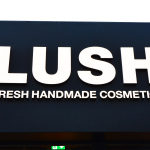3 ways to win at marketing this summer

Business is not entirely meritocratic. It’s a nice ideal but industry realities are layered with privilege, biases, fallacious standards of merit and assessment, tax schemes, selectively aligned subsidies, inconsistent enforcement of antitrust, governmental neglect of positive obligations, and various forms of pay-to-play.
To the extent that business is meritocratic, B2B marketing must be considered as a part of that evaluation of merit.
Innovation, rapid development, and low prices often emerge through competition. It’s a battle of ideas but an idea will not automatically win simply because of its business or social merits.
Marketing strategies are an integral aspect of the proposition that consumers will accept or reject. Marketing is how the consumer becomes aware of the overlap between their needs and a brand’s particular excellence. It’s inseparable from the business, not an add-on.
With this clearer sense of stakes, here are some ways to win at B2B marketing this summer:
# 1 | Ease up on outbound sales & marketing
Sales professionals, you know the dreaded feeling. You conduct extensive research, craft a personalized email to a prospect, and hope for a reply. Then you receive one immediately, in the form of an out-of-office email.
It’s summer. A cascading schedule of vacations makes B2B more difficult. When prospects return to the office, they will be busy trying to catch up on communications and putting out casually ignored fires. It’s unrealistic to expect that they will prioritize a response to that cold email sitting at the bottom of their inbox. Even if they were in the office, they might not have responded.
And even direct mail has limitations. If your circular included a coupon or promo code, it may be expired by the time it’s received.
Trade shows and seminars can be costly, may not inspire a lot of attendees over the summer, and do not always deliver on ROI expectations.
Cold calling can still be effective, but that summer heat increases the likelihood that you’ll connect with a voicemail.
You get the idea. All these tactics have their time and place. Summer is arguably the time to lean heavily on technological solutions. There’s a land grab for data right now. Location, transactional, and psychographic data can inform spending on the intent marketing side of things. With AI-powered solutions, marketers can discern signals of intent and activity. They can respond in more relevant ways, with a higher probability of success.
It sure beats trying to capture the attention of an executive on a jet ski. But if you’re marketing to consumers, you may actually have an opportunity this summer. People in “vacation mode” might be less price-sensitive. If you’re trying to market a leisure product, location data could play a substantial role in your efforts.
# 2 | Prioritize quality content and trust Google to do its job
SEO is still relevant. It would be ridiculous to claim otherwise. But the landscape of search marketing has changed considerably over the years and some perspectives haven’t kept up.
Stuffing a page with keywords is no longer the best tactic for gaining visibility. There is a pressing need for good content aimed at user retention and social shares and this eclipses metatags. In the old school method, people would write things within description tags on webpages and excessively use keywords to signify relevance to search engines. This was not for the benefit of users; it was specifically done to tell the search engine about the particular page.
Today, search engines are not just looking at text files but conducting sophisticated analysis of engagement data and social media. You can lift your ranking by providing value to users through content. But some outdated mentalities have lingered, with small business novices still trying to spam their way to the top.
There are some single-page applications powered by Javascript that are markedly different than static webpages. If you have a dynamic application, make sure your application has server side rendering, which will render a version of the webpage that Google will be able to index.
Overall, Google is increasingly sophisticated and aware, so these days, you can mostly focus on quality content and design.
# 3 | Use the latest tools to figure out your website flow
Sketch is all the rage these days, particularly when it’s paired with Invision and Zeplin. Designers can figure out the look and flow of mobile apps and websites. They can easily tweak designs, consider them cohesively, and export in needed formats. Plug-ins and integrations further extend the value of this popular vector graphics editor.
By adopting the right tactics and design tools, digital marketers can win at their profession. Modern approaches and sincere, valuable content are critical. Summer may have slowed things down but the role of marketing is intrinsic to the success of any business. And that never wavers.









